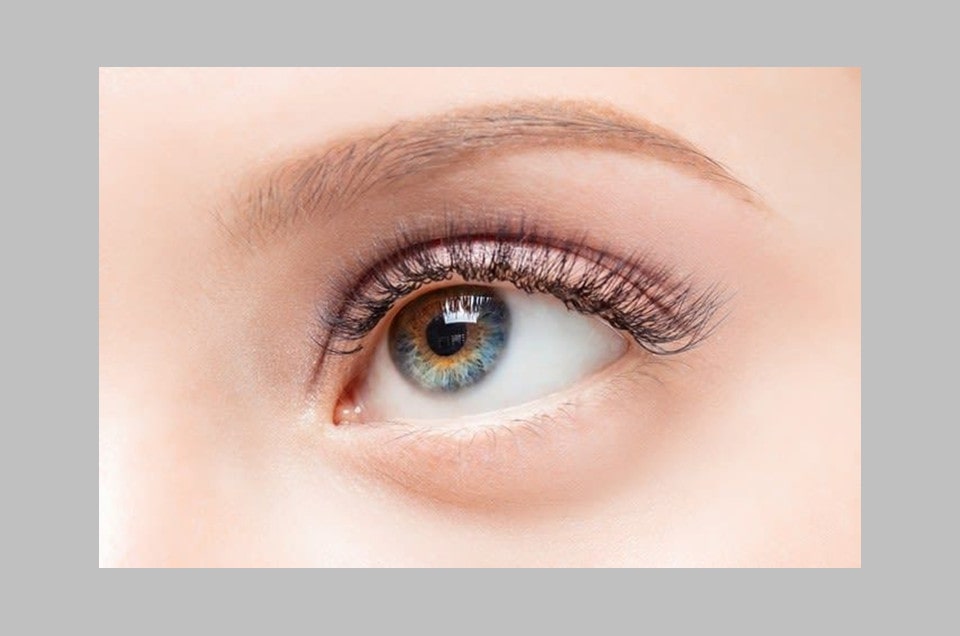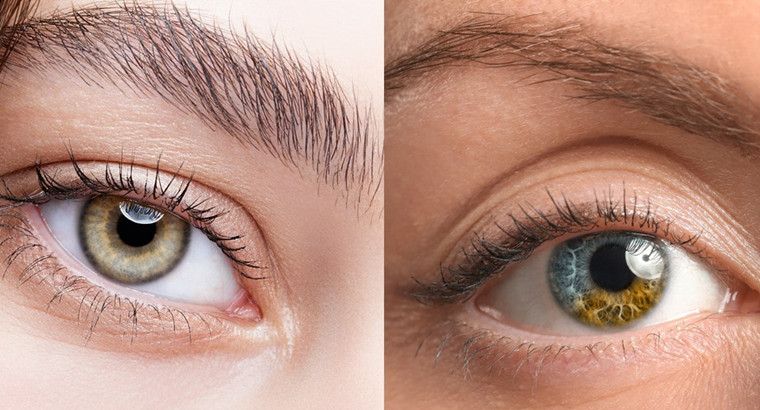Similar to snowflakes, each human eye has its own unique and intricate iris pattern. Melanin content, melanin dispersal, and how light scatters throughout the eye (Rayleigh Scattering) determine eye color. Inspect your eyes using a mirror in natural lighting, wearing a white shirt in front of a white backdrop.
If you see more than one color, you may wonder if your eyes are hazel or if you have heterochromia. What are Hazel’s eyes, what is central heterochromia, and what’s the difference? Read on to know more about hazel eyes vs. central heterochromia.
Hazel Eyes

With their exact color seeming to change in different lighting or clothing, hazel eyes are considered mysterious. Hazel eyes are a mixture of green, gold, and brown, setting them apart from the solid coloring of amber or green eyes.
Most often seen in Spanish, Brazillian, Middle Eastern, and North African descent, some celebrities with hazel eyes include Jada Pinkett Smith, Sofia Vergara, and Rashida Jones.
Central Heterochromia

Image source: Pinterest
Heterochromia derives from the greek “hetero,” meaning different, and “chromia,” meaning color. Types of heterochromia include complete, segmental, and central, each defined by the appearance of two contrasting eye colors.
In central heterochromia, a ring of color in the center of the eye surrounding the pupil is different from the rest of the iris. For example, a person with green or blue eyes may have a ring of gold in the center of the iris around their pupil. Celebrities with heterochromia include Kate Bosworth, Mila Kunis, and Olivia Wilde.
How Are Hazel Eyes and Central Heterochromia Different?
The difference between hazel eyes and central heterochromia is the distribution of melanin (the pigment that gives eyes their color) throughout the iris. Hazel eyes may have a mixture of colors, but these colors all blend while moving outward from the pupil.
Under different circumstances, hazel eyes even appear to change color. In contrast, central heterochromia causes a constant ring of color around the pupil that is drastically different from the rest of the iris. Moreover, hazel is considered a normal eye color, while central heterochromia is a medical condition.
Which Is More Common?

Image source: Pinterest
Heterochromia is sporadic, with less than 200,000 people in the United States experiencing complete heterochromia. Researchers are uncertain of the rarity of the central heterochromia, as, with its relatively normal appearance, it can be challenging to document.
However, the rarity of other types of heterochromia suggests it is rare as well. Hazel eyes are also rare, found in only about 5% of the population.
What Causes Central Heterochromia?
Vast differences in melanin distribution create central heterochromia. While the exact cause of central heterochromia is still unknown, it often randomly happens at birth.
When central heterochromia appears as a genetic trait, it’s typically linked to an underlying congenital disease like Horner’s syndrome. Central heterochromia that appears later in life can indicate medical complications such as injuries, diabetes, or infection.
How Is Central Heterochromia Diagnosed?

Image source: Pinterest
Central heterochromia is usually harmless and does not need a diagnosis. However, central heterochromia occurring later in life or as a genetic trait could indicate underlying health conditions or complications and requires a doctor’s attention.
An optometrist or ophthalmologist will complete a comprehensive eye examination consisting of a visual test and inspection of the optic nerve, peripheral vision, pupils, and eye pressure.
Occasionally the doctor will order an OCT or optical coherence tomography (a non-invasive eye imaging test) or blood tests and chromosome studies for those with genetic heterochromia.
Is Central Heterochromia Treatable?
The underlying cause determines the need for medical treatment and the treatment route. Usually, central heterochromia is a benign condition and does not require treatment. However, those with acquired and genetic heterochromias should seek a physician as the condition could be a symptom of a significant problem that needs treatment.
For cosmetic concerns, using colored contact lenses can correct differences in eye color.










